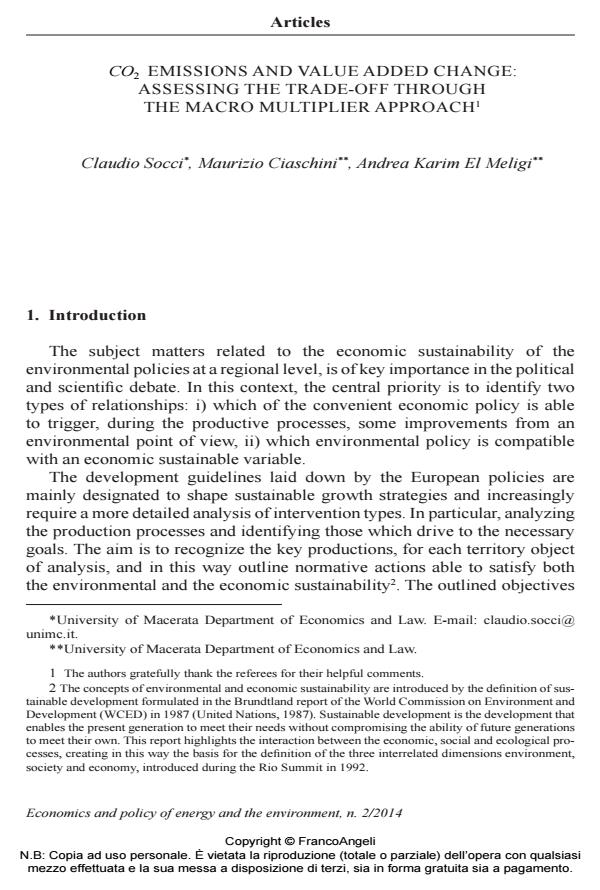CO2 emissions and value added change: assessing the trade-off through the macro multiplier approach
Journal title ECONOMICS AND POLICY OF ENERGY AND THE ENVIRONMENT
Author/s Claudio Socci, Maurizio Ciaschini, Andrea Karim El Meligi
Publishing Year 2015 Issue 2014/2
Language English Pages 26 P. 49-74 File size 383 KB
DOI 10.3280/EFE2014-002004
DOI is like a bar code for intellectual property: to have more infomation
click here
Below, you can see the article first page
If you want to buy this article in PDF format, you can do it, following the instructions to buy download credits

FrancoAngeli is member of Publishers International Linking Association, Inc (PILA), a not-for-profit association which run the CrossRef service enabling links to and from online scholarly content.
Recently, political and scientific debate is strongly focused on issues questioning the economic sustainability of environmental policies at regional level. Following European directives and protocols and in accordance with the principles of sustainable development, the interventions designed by policy makers are required to aim at restructuring the final emissions. In this paper an effort is made to assess a new structure for the final demand which would be able to achieve a composite task: the economic sustainability and the environmental improvement. In this respect, the regional Social Accounting Matrix (SAM), referred to a typical region of the Mediterranean area, the Sardinia, will be integrated with the environmental accounting scheme in order to develop the regional multisectoral extended model. The resulting inverse matrix will be used to identify which composition of the final demand (policy control variable) is consistent with the complex emissions together with a positive variation of the aggregate total output (policy target variable). For this purpose the Macro Multipliers approach, through the use of a bidimensional decision-making index, will allow us to identify the convenient structures for both economic and environmental target and assessing the expected negative trade-off.
Keywords: Environmental policy, multisectoral extended model, macro multipliers approach
Jel codes: D58, E16, H20, H76
- The nexus of income, expenditure, and output in agribusiness amid global crises: the case of Nigeria Irfan Ahmed, Ibrahim Alamir, Abdulwahab Mujalli, Mohanad Sadoun Alsadoun, Claudio Socci, Stefano Deriu, in Journal of Agribusiness in Developing and Emerging Economies /2025 pp.1
DOI: 10.1108/JADEE-08-2024-0279
Claudio Socci, Maurizio Ciaschini, Andrea Karim El Meligi, CO2 emissions and value added change: assessing the trade-off through the macro multiplier approach in "ECONOMICS AND POLICY OF ENERGY AND THE ENVIRONMENT" 2/2014, pp 49-74, DOI: 10.3280/EFE2014-002004